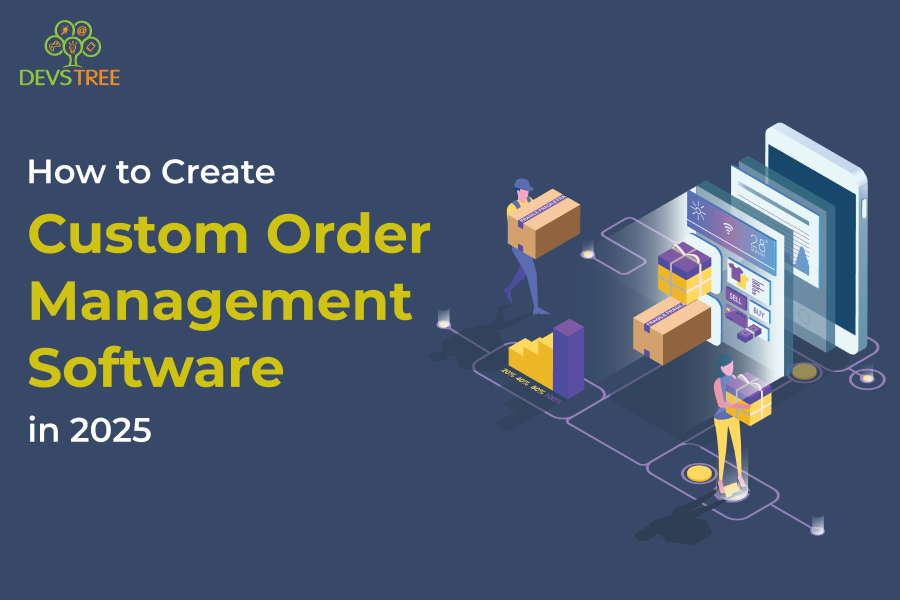
With the pace of the digital economy, more and more companies are now adopting efficient order management systems to streamline their operations, boost customer satisfaction, and increase revenues. Custom order management software has become a need for those companies looking to tailor solutions to suit specific needs. This blog delves into the steps involved in creating effective custom order management software in 2025, including some key features, technologies, and considerations in working with a custom software development company.
Understanding Order Management Software
From order placing to delivery, the order processing workflow is intended to be automated and streamlined by the order management software, or OMS. This type of software is designed to assist companies with inventory management, shipping tracking, payment processing, and refund handling. It improves efficiency and customer experience in the overall process since features can be customized for business-specific needs.
Key Features to be included in Custom Order Management Software:
When developing custom order management software, the following key features should be included:
- The User-Friendly Interface: Make the interface clean and more intuitive. This will bring ease of use for a customer as well as in-house staff. Streamlining navigation and a visually appealing design are elements of effective order management
- Order Tracking: Real-time tracking of orders allows a customer to monitor their orders over the fulfillment process, thus offering greater transparency and trust.
- Inventory management: The integrated inventory management system will enable companies to track the levels of their stock, reorder control, and avoid both stockout and overstock situations.
- Multi-Channel Integration: Since companies sell through several channels, including social media, brick-and-mortar stores, and e-commerce sites, multi-channel integration is necessary to process orders efficiently.
- Payment Processing: Secure payment gateways should be included to allow for various payment options, making it more convenient for customers.
- Reporting and Analytics: Complete reporting tools inform sales trends, customer behavior, and inventory turnover to help a business make the right decisions.
- Customer Support Integration: Adding customer support features such as chatbots or helpdesk functionality improves the satisfaction of customers and reduces the time it takes to resolve issues with orders.
- Mobile Access: With mobile commerce on the rise, developing an on-demand app development solution that allows users to place and manage orders from smartphones is becoming more important.
Steps to Develop Custom Order Management Software
- Define Your Needs:
Before start developing, define your requirements including business needs, target audience, and specific functionalities. In this stage, consultations with stakeholders from the sales, inventory management, and customer support teams must be made to ascertain what features are preferred.
- Select a Development Approach:
Decide whether to construct a web-based application a mobile app, or both. A web application benefits the desktop user, while on-the-go customers are best facilitated by mobile apps. As such, work with a reputable software development agency to assess what is best for the business model.
- Select the Right Technology Stack:
Choose a technology stack that fits the requirements of your project to be scalable. Some of these popular ones include:
- Frontend Technologies: React, Angular, or Vue.js for building interactive user interfaces.
- Backend Technologies: Node.js, Python (Django or Flask), or Java (Spring) for robust server-side development.
- Database Management: MySQL, PostgreSQL, or MongoDB for efficient data storage and management.
- Cloud Services: Use cloud platforms such as AWS, Azure, or Google Cloud for hosting and scalability.
- Design the User Interface:
Design wireframes and prototypes to envision the application layout and user flow. Focus on providing a seamless user experience through intuitive navigation and accessibility.
- Development and Testing:
Start developing according to agile methodologies to deliver the project on time while allowing flexibility. Testing is always an important part of the process as it identifies bugs and rectifies them to ensure that the software delivers as expected. Use unit testing, integration testing, and user acceptance testing.
- Deployment and Launch:
After testing is done, deploy the logistics software solutions in a production environment. Test all components to work as expected and perform the last round of testing before releasing it to the users.
- Ongoing Maintenance and Support:
After launching, give constant maintenance and updates to solve any problems arising, implement user feedback, and adjust to changing business needs. Continuous improvement is what maintains user satisfaction and software efficiency.
Conclusion:
Developing in-house order management software in 2025 is a strategic investment that companies are using to help optimize their order processing abilities. To meet your requirements, build essential features into it, and collaborate with an experienced development partner, you’ll be building a solution that drives efficiency enhances customer satisfaction and fuels business growth.
At Devstree, we specialize in custom software development that is tailored to your business needs. Contact us today to learn how we can assist you in transforming your order management processes and driving your business forward!
